Capturing Formula One’s best racers in the paddocks, composing foreign supercars in grand locations, or even snapping shots of your friend’s JDM car at the local mall parking lot. Automotive photography has helped us appreciate, observe and remember the cars we love. But how are these cars and moments captured?
From the plethora of lenses that are out there, we’re going to focus on the essentials to get you off to the races: a versatile zoom lens, prime lens, and telephoto lens.
Searching for the right camera body for your car shoots? Check out our full guide for picking the best camera for automotive photography.
Want more photography tips and inspo? Subscribe to our mailing list to get the latest straight to your inbox 📮
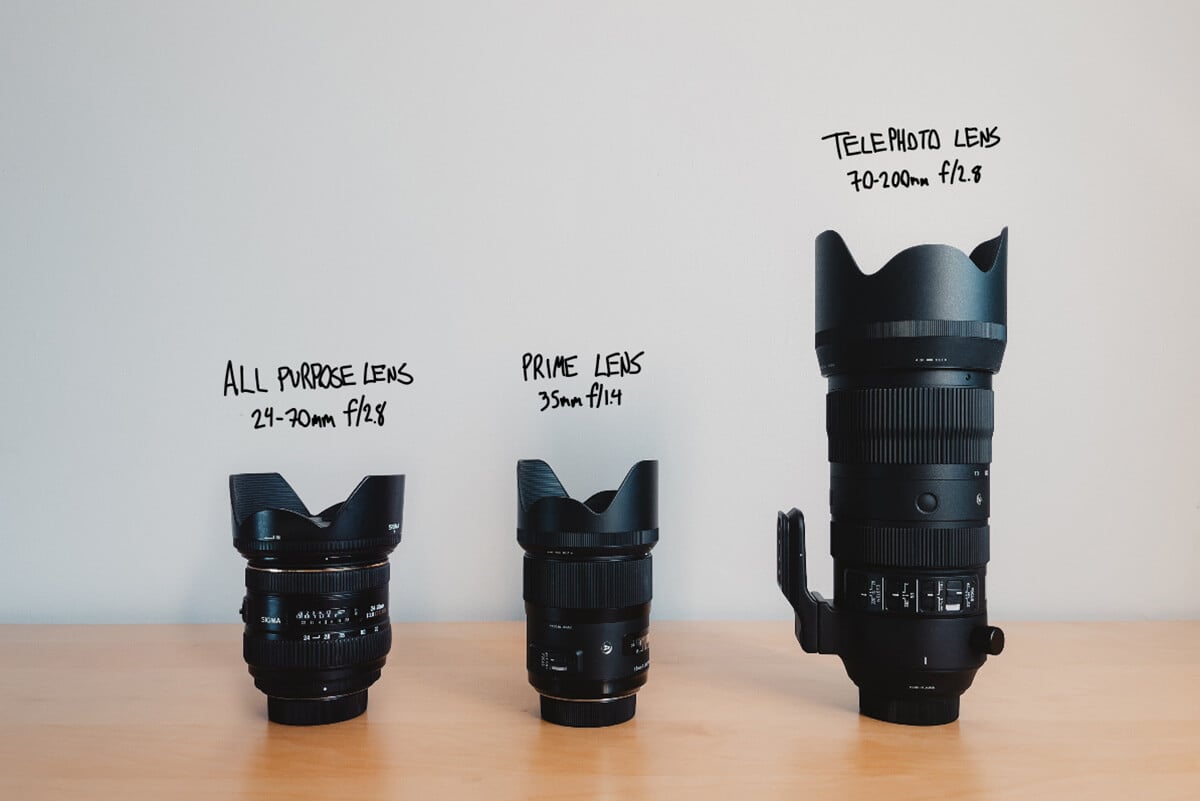
24-70mm f/2.8 – The All-Purpose Car Photography Lens
The mighty 24-70mm f/2.8 lens is the gold standard all-purpose lens for any use, making it one of the most versatile lenses for car photography.
When doing outdoor car photography and capturing a car with its surrounding environment, the 24-70 lets you widen up and capture the landscape. All of this while remaining a fast and sharp lens and limiting the wide focal length to 24mm which avoids distortions in the image.
Get the lens:
Sony: Sony 24-70mm f/2.8 Lens | Alt: Sigma Art 24-70mm f/2.8 FE Lens
Canon: Canon 24-70mm f/2.8 Lens | Alt: Sigma Art 24-70mm f/2.8 Lens (for Canon)
Nikon: Nikkor 24-70mm f/2.8 Lens | Alt: Sigma Art 24-70mm f/2.8 Lens (for Nikon)
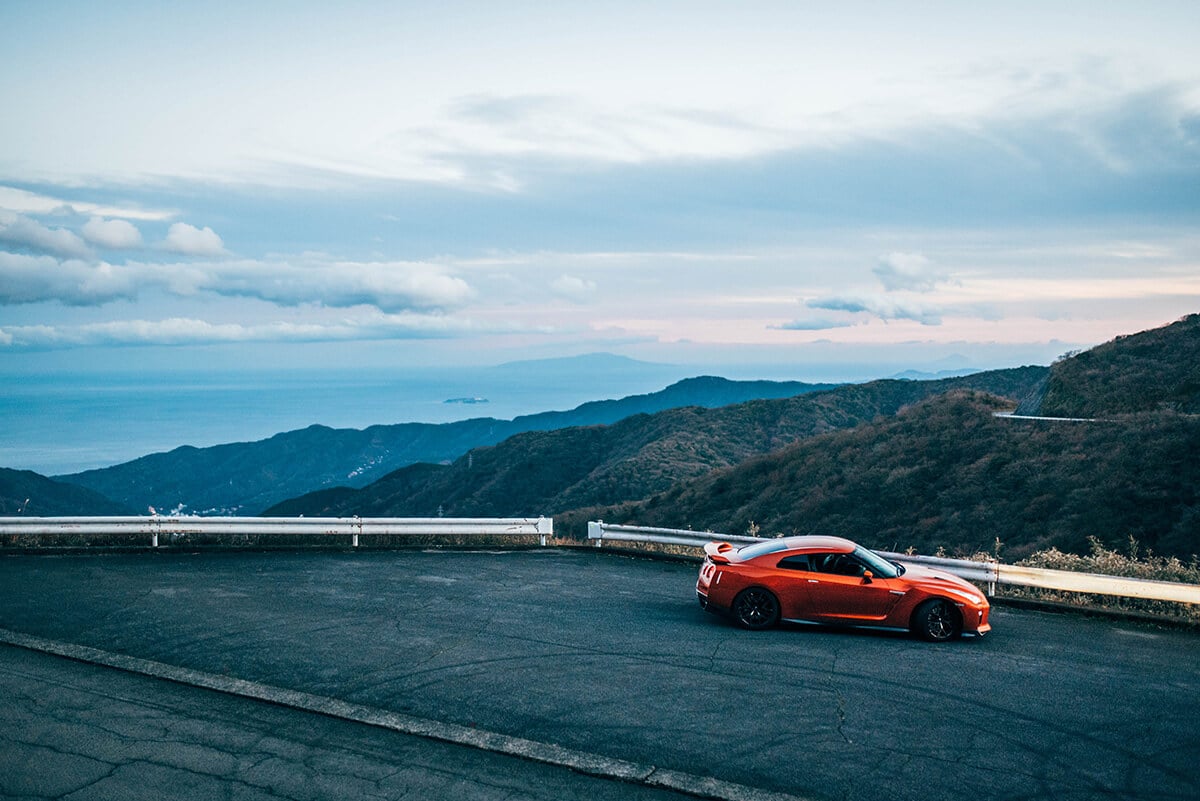 Settings: 1/250, f/2.8, ISO 1250, 24mm | Image by Sayem Reza
Settings: 1/250, f/2.8, ISO 1250, 24mm | Image by Sayem Reza
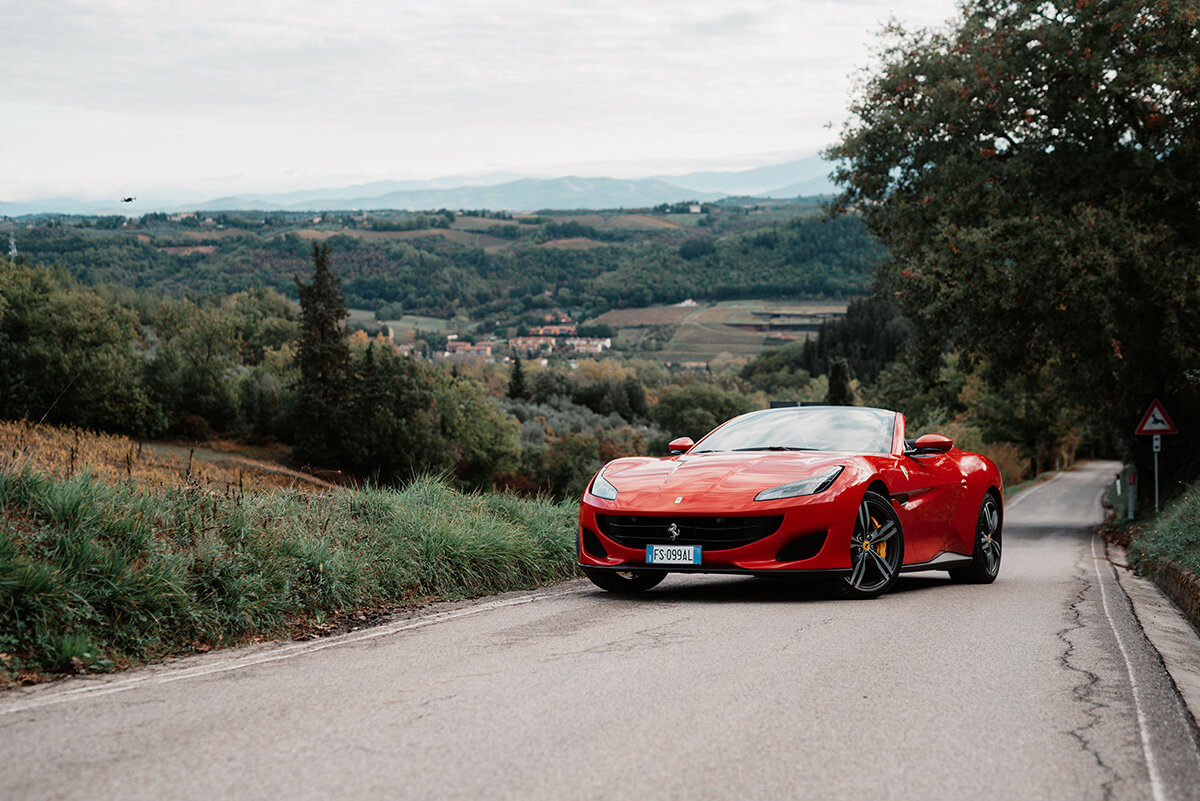 Settings: 1/800, f/2.8, ISO 200, 40mm | Image by Sayem Reza
Settings: 1/800, f/2.8, ISO 200, 40mm | Image by Sayem Reza
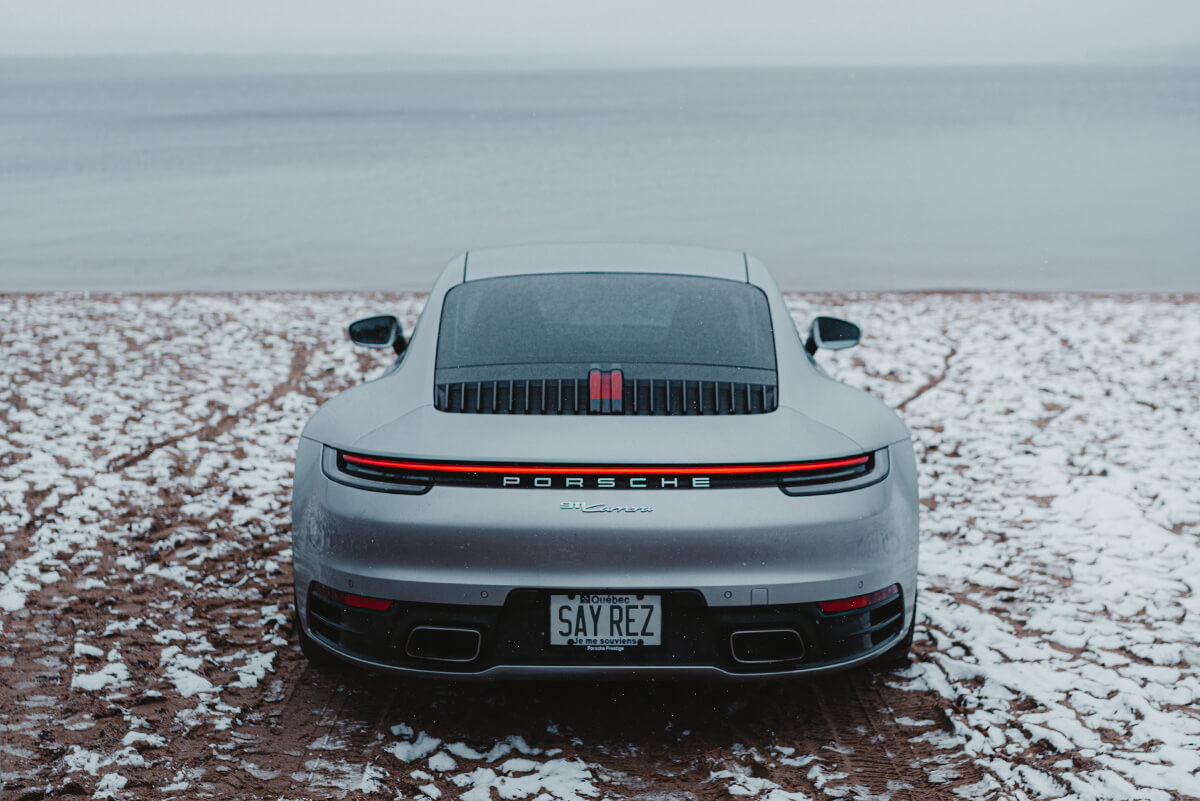 Settings: 1/1250, f/3, ISO 100, 70mm | Image by Sayem Reza
Settings: 1/1250, f/3, ISO 100, 70mm | Image by Sayem Reza
With the nature of car photography involving lots of movement, it’s good to have a lens that allows you to be versatile with its focal length. Going from a wide 24mm to an almost telephoto 70mm, the lens will let you adjust in a snap while the car is sitting still, or driving right past you for a motion shot.
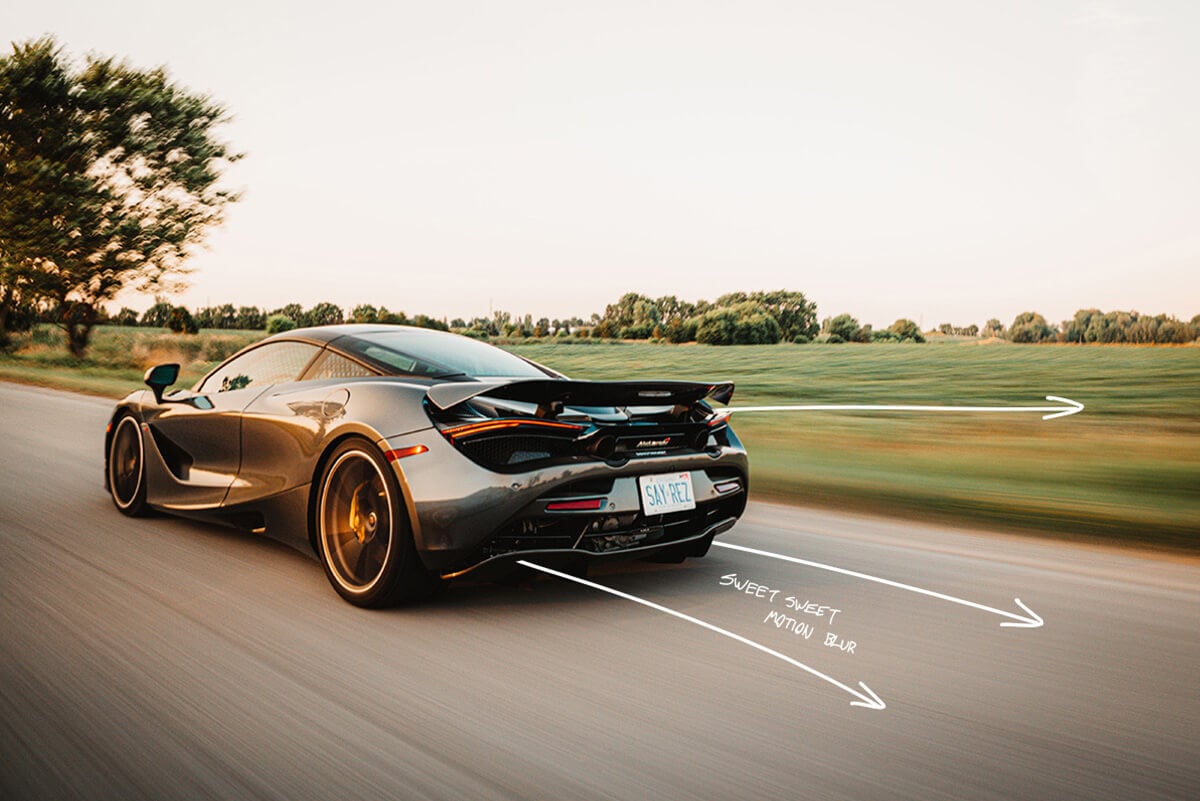 Settings: 1/13, f/8, ISO 250, 24mm | Image by Sayem Reza
Settings: 1/13, f/8, ISO 250, 24mm | Image by Sayem Reza
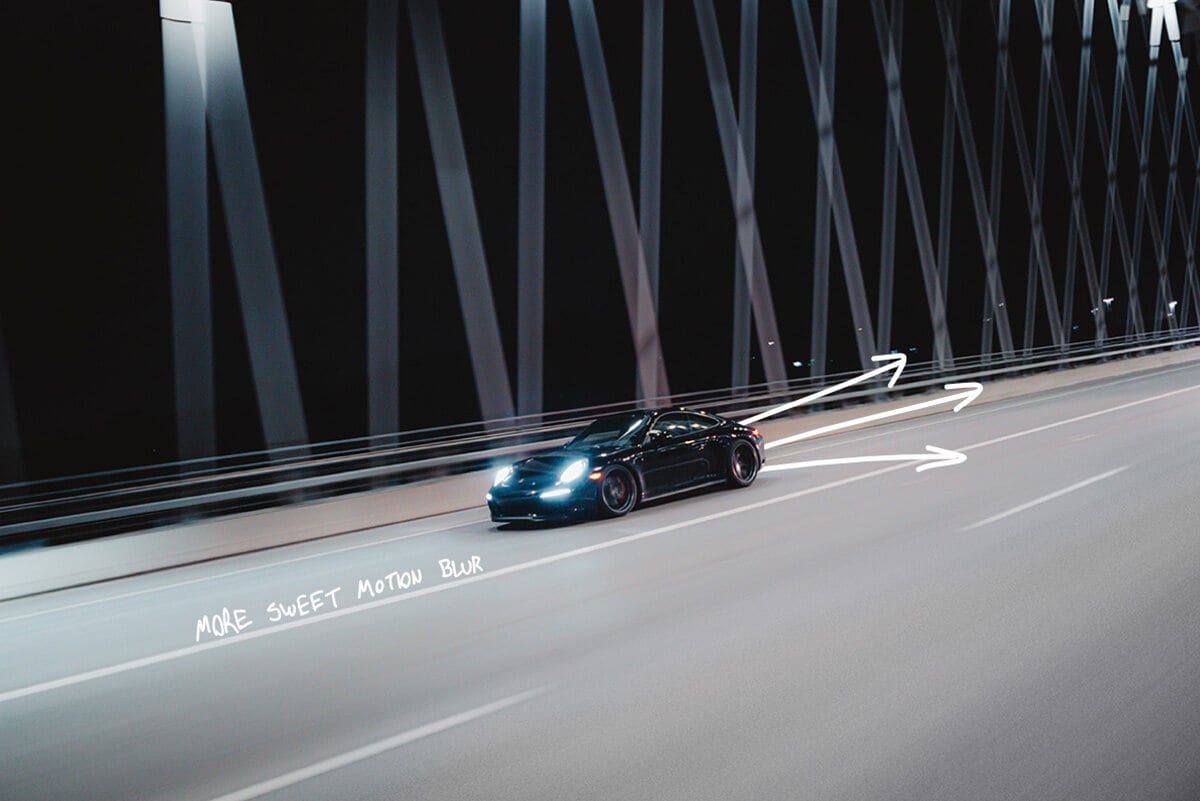 Settings: (1/10, f/4, ISO 1600, 24mm) | Image by Sayem Reza
Settings: (1/10, f/4, ISO 1600, 24mm) | Image by Sayem Reza
35mm f/1.4 – The Prime Car Photography Lens
The 35mm f/1.4 prime lens is a jack of all trades. The 35mm focal length is a go-to for car photography as it most accurately depicts cars without any lens distortion. That combined with the wide-open aperture allows for sharp details from its shallow depth of field and silky smooth bokeh and great low light performance.
When the 35mm is opened wide up from f/1.4-f/4, the shallow depth of field is one of the best among these car photography lenses. The bokeh you achieve is magical and the separation of foreground and background is prominent. It’s a great lens to really distinguish the car from its environment.
Get the lens:
Sony: Sony Zeiss 35mm f/1.4 Prime Lens | Alt: Sigma Art 35mm Prime Lens (for Sony)
Canon: Canon 35mm f/1.4 Prime Lens | Alt: Sigma Art 35mm Prime Lens (for Canon)
Nikon: Nikkor 35mm f/1.4 Prime Lens | Alt: Sigma Art 35mm Prime Lens (for Nikon)
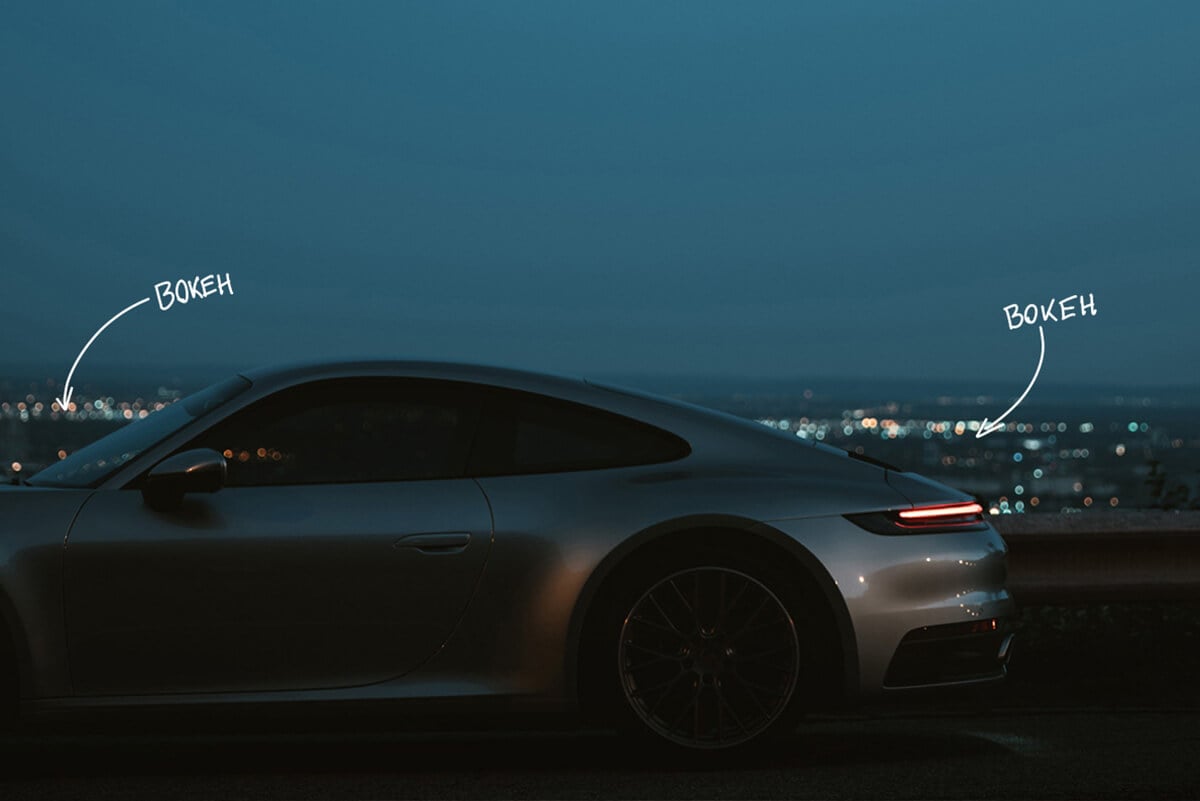 Settings: 1/6, f/2, ISO 125, 35mm | Accessories: Peak Design Travel Tripod
Settings: 1/6, f/2, ISO 125, 35mm | Accessories: Peak Design Travel Tripod
Image by Sayem Reza
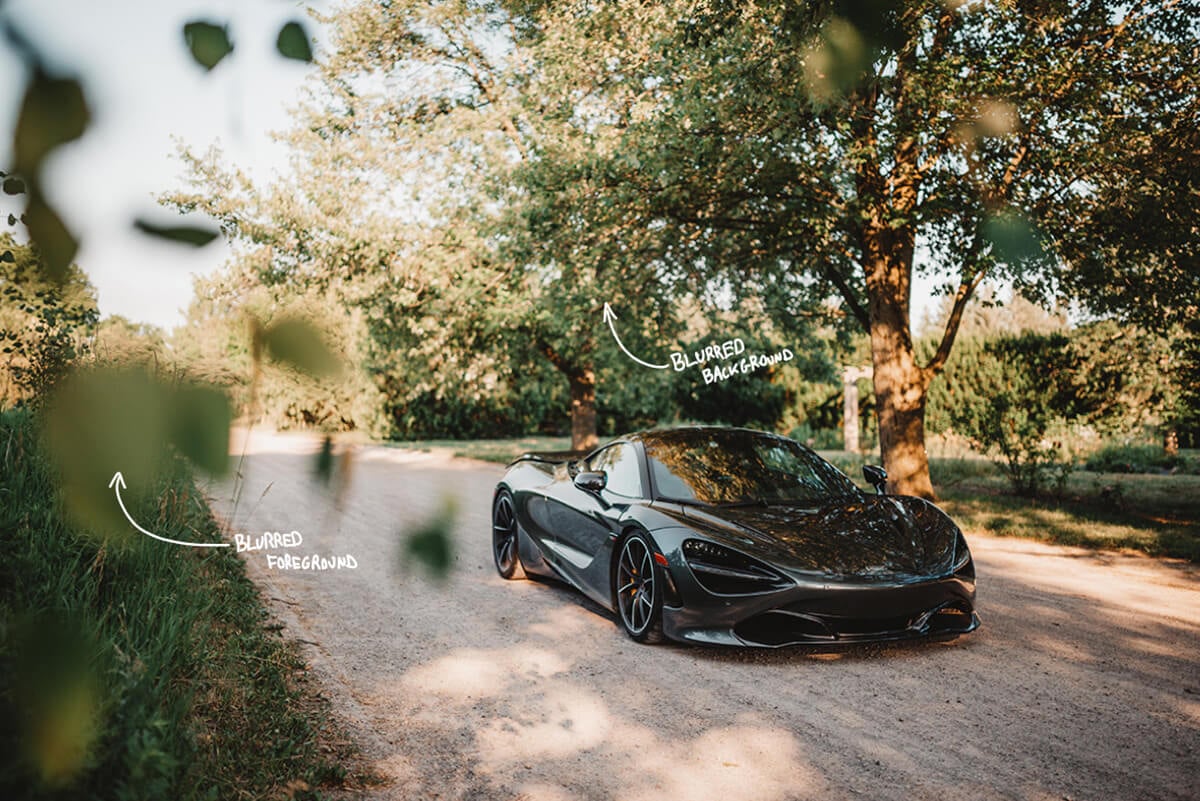 Settings: 1/400, f/2, ISO 125, 35mm | Image by Sayem Reza
Settings: 1/400, f/2, ISO 125, 35mm | Image by Sayem Reza
Besides being a great lens to blur out the background and foreground, the 35mm focal length is wide enough to capture exceptionally sharp wide shots of the car in its environment. You’d want to stick to an aperture range of f/2 – f/5 to avoid unwanted out of focus areas
One thing to look out for when capturing cars on wider lenses (~24mm or less) is lens distortion. Wide lenses can warp your subject: from creating a fishbowl look at the center, to stretching it towards the edges – unflatteringly exaggerating features of the vehicle. The 35mm focal length is perfect for true-to-life capture. This focal length will leave the precious design of the car untouched (or in this case, un-warped). Check out these shots of the Lamborghini Aventador and Aston Martin DBS Superleggera to see the 35mm in action:
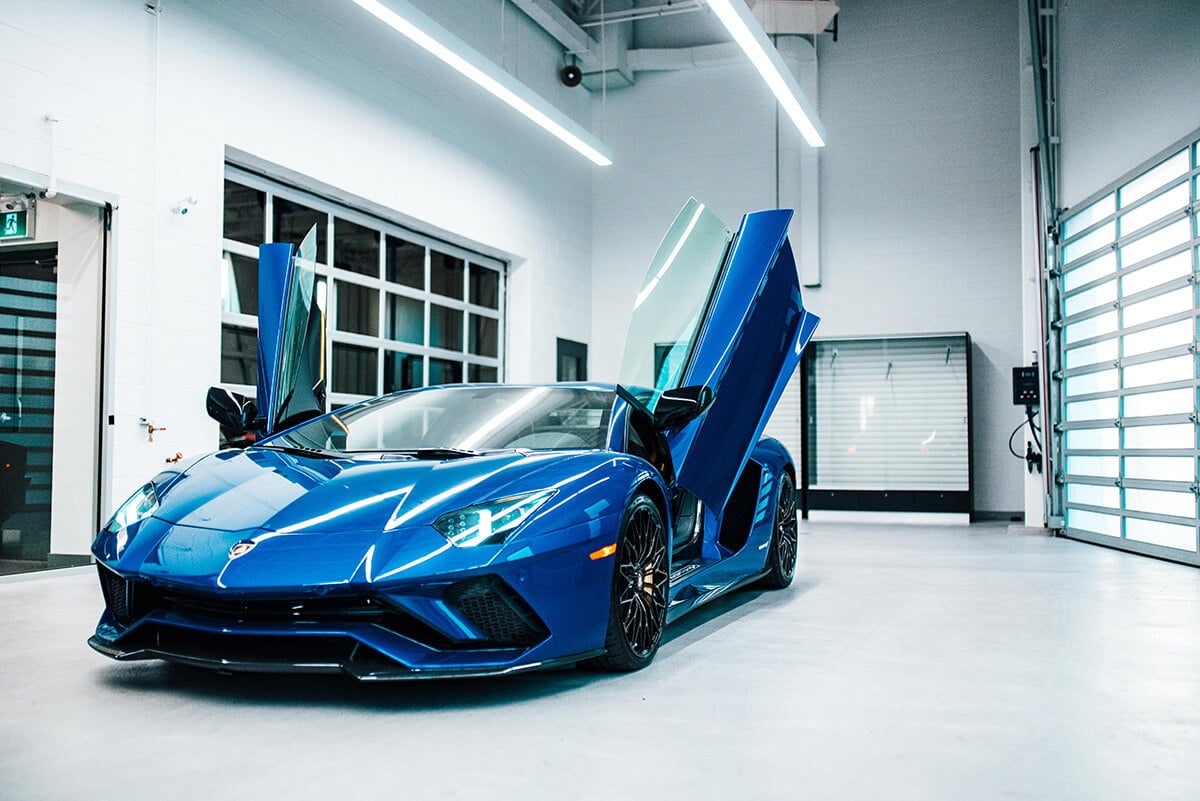 Settings: 1/500, f/2.8, ISO 640, 35mm | Image by Sayem Reza
Settings: 1/500, f/2.8, ISO 640, 35mm | Image by Sayem Reza
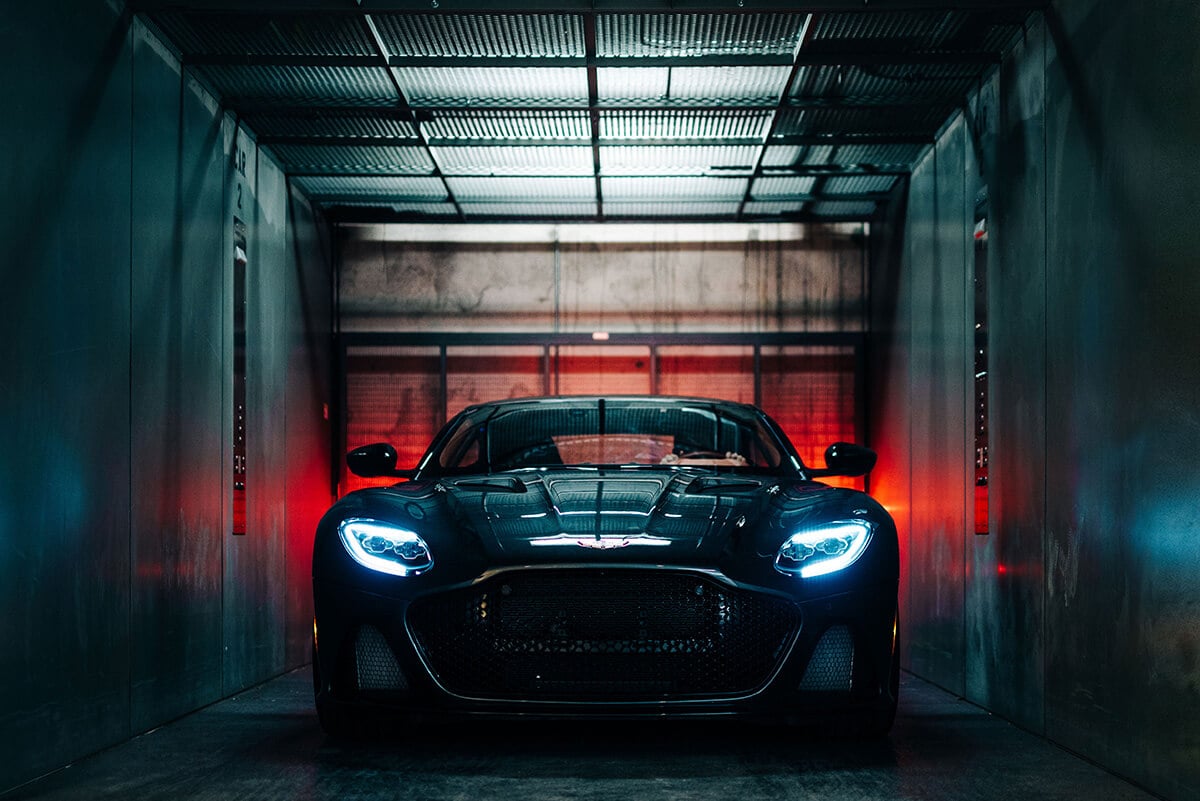 Settings: 1/160, f/2.8, ISO 400, 35mm | Image by Sayem Reza
Settings: 1/160, f/2.8, ISO 400, 35mm | Image by Sayem Reza
70-200mm f/2.8 – The Telephoto Car Photography Lens
The robust 70-200mm f/2.8 telephoto is a lens that should be in every car photographer’s bag.
This telephoto won’t necessarily break the bank compared to the beastly 400mm or 600mm lenses that professional racing photographers use, but serves as a great starting point for car photography from a distance.
You see, being out standing on an actual race track apex close to all the action is the farthest thing from safe – these telephotos allow you to get close to the action from afar. Slap a variable ND filter onto it and you can capture silky smooth motion blurs by setting the shutter low (1/10 – 1/50) and following the motion of the cars.
Get the lens:
Sony: Sony 70-200mm f/2.8 G-Master Lens | Alt: Sony 70-200mm f/4 FE Lens
Canon: Canon 70-200mm Lens (f/2.8) | Alt: Canon 70-200mm Lens (f/4)
Nikon: Nikkor 70-200mm f/2.8 Lens | Alt: Sigma 70-200mm f/2.8 Lens (for Nikon)
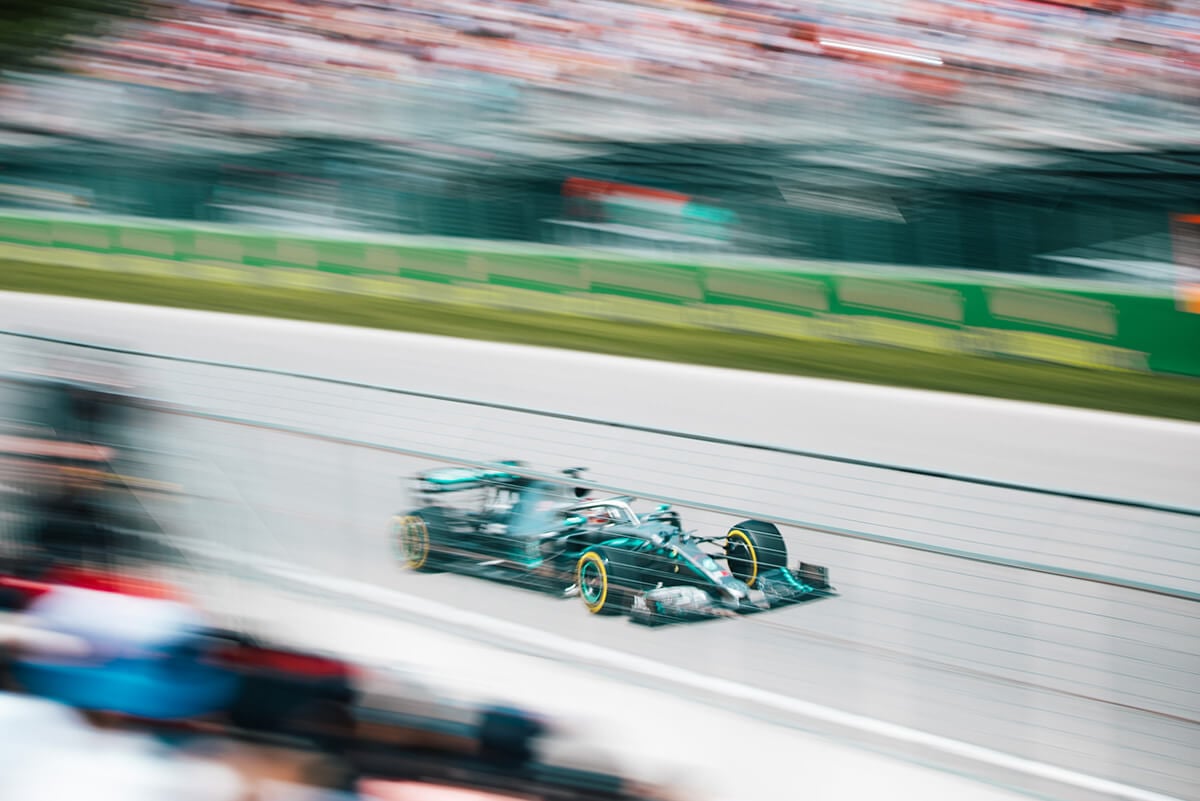 Settings: 1/40, f/2.8, ISO 100, 80mm | Accessories: PolarPro 82mm Variable ND Filter
Settings: 1/40, f/2.8, ISO 100, 80mm | Accessories: PolarPro 82mm Variable ND Filter
Image by Sayem Reza
Another benefit of a telephoto is lens compression. This is literally the “compressing” of a scene – making the background appear much larger and closer than it actually is. This helps create an epic and grand look of a car with its background – it can be a mountain, cityscape, and anything in between!
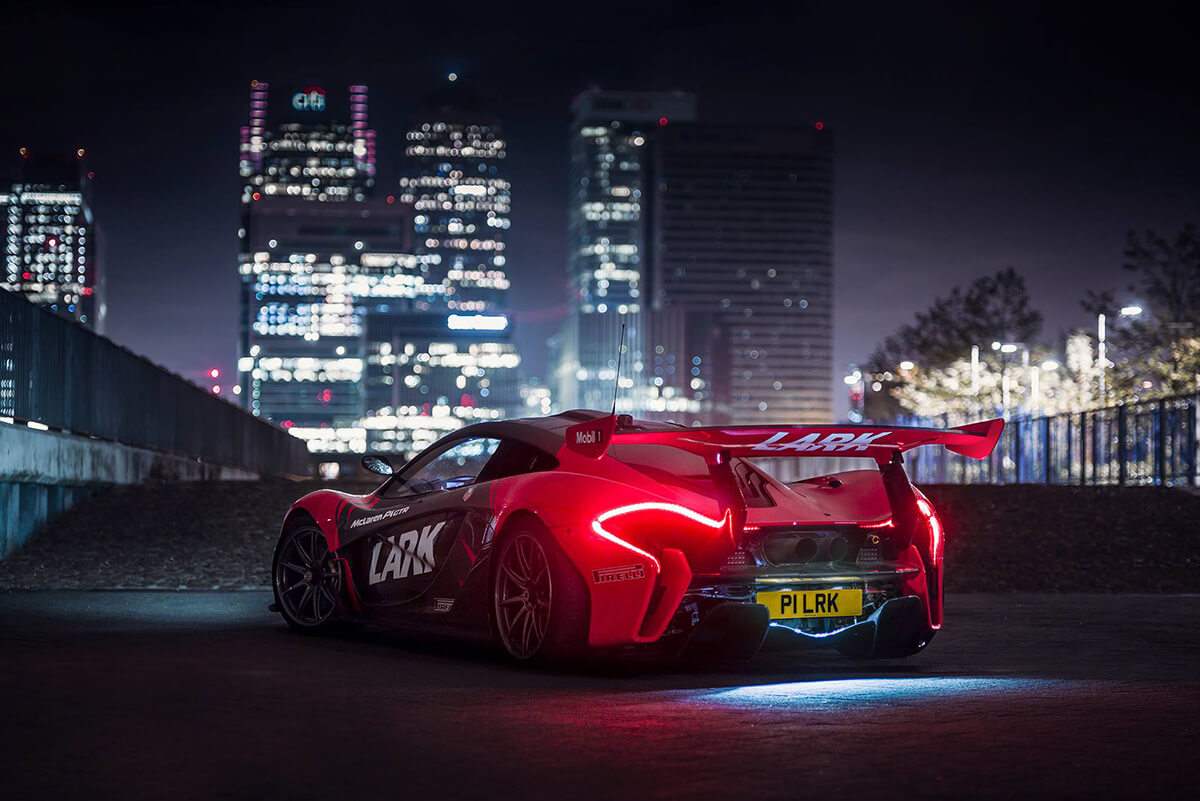 Image by G.F. Williams
Image by G.F. Williams
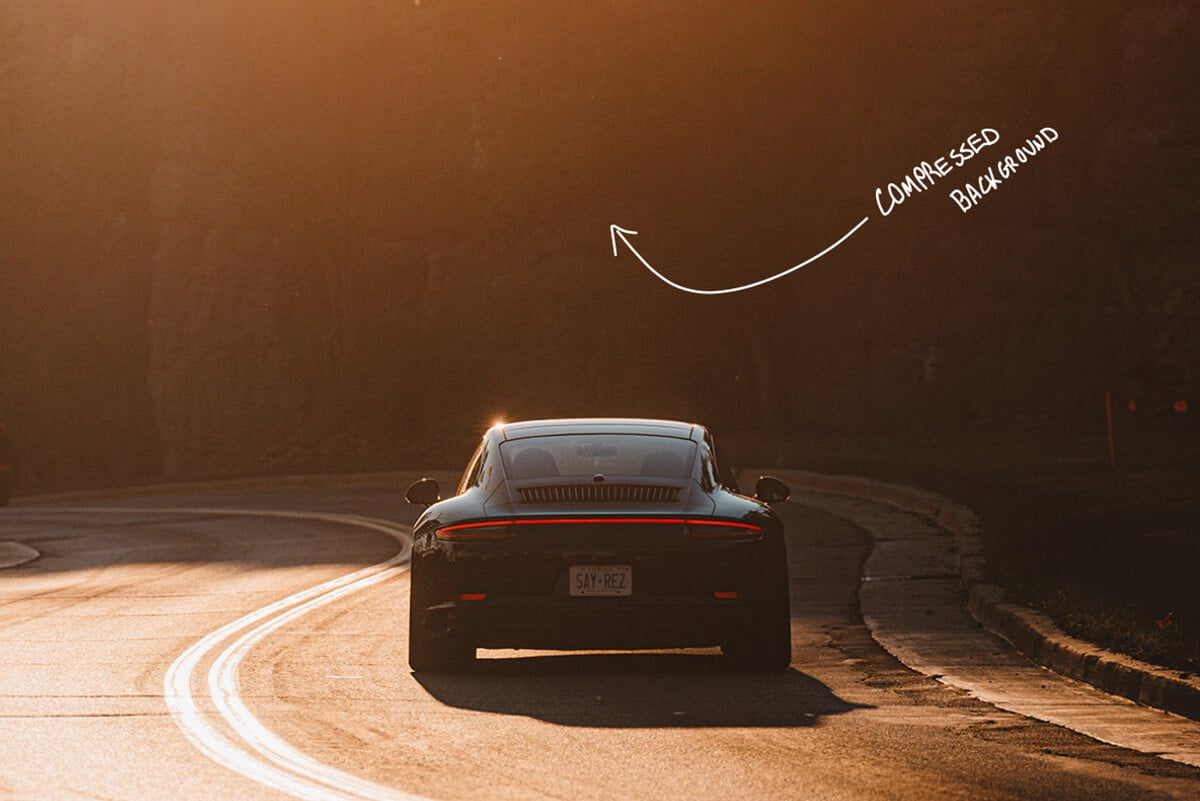 Settings: 1/320, f/4, ISO 100, 180mm | Image by Sayem Reza
Settings: 1/320, f/4, ISO 100, 180mm | Image by Sayem Reza
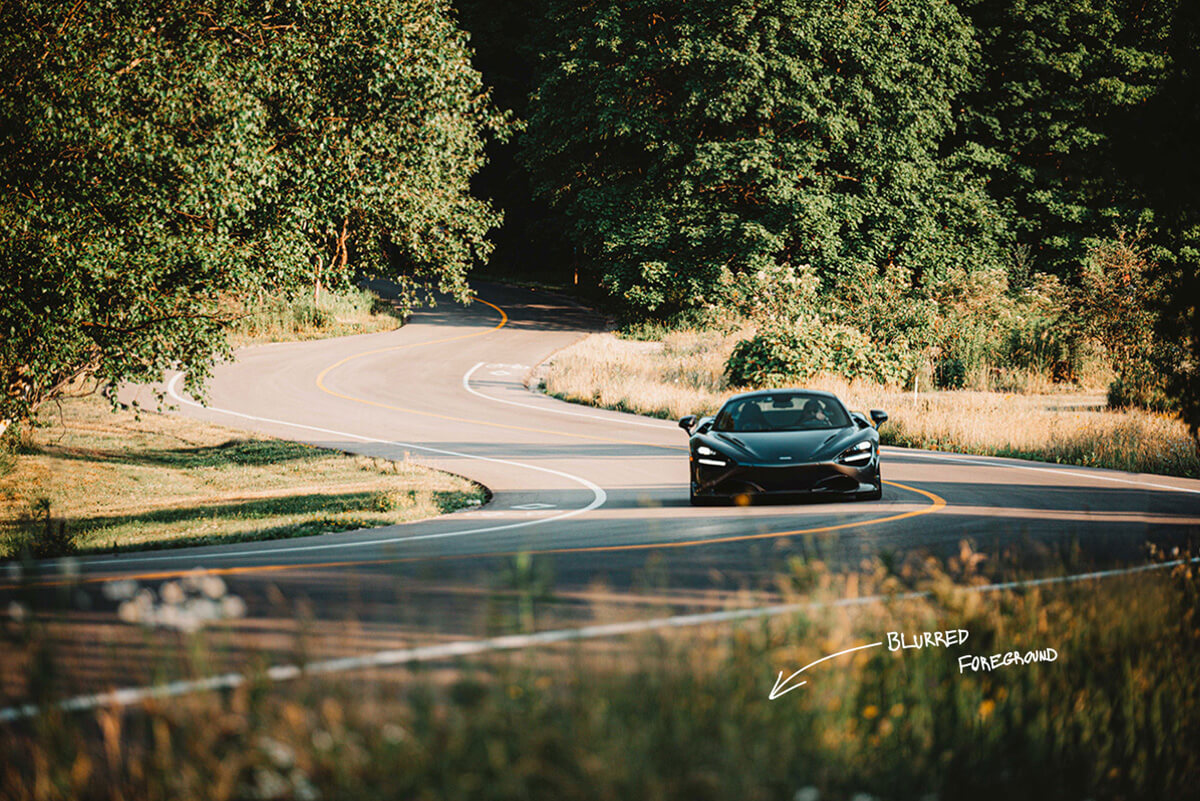 Settings: (1/200, f/2.8, ISO 125, 155mm) | Image by Sayem Reza
Settings: (1/200, f/2.8, ISO 125, 155mm) | Image by Sayem Reza
Drones for Car Photography – Aerial Car Images
While not a lens itself, an honorable mention and great asset to any car photography arsenal is a drone. Using a drone lets you to capture epic aerial scenes that wouldn’t otherwise be possible, with a lot more control than going for a helicopter ride (and a lot easier on the wallet, too).
From the Mavic Air, to the robust Mavic Pro – there’s good range to pick from whether you’re a hobbyist or pro. For the most value with more batteries and accessories, we recommend grabbing the Fly More Combo option for whichever drone you pick.
Get a drone:
- DJI Mavic 2 Pro – Our pick! Incredible quality images (1″ CMOS, 20MP) and video (4K), especially in low light, thanks to the Hasselblad Camera.
- DJI Mavic Air 2 – Lightweight and portable, but still packs a punch – 4K video, 48MP images.
- DJI Mavic Mini – Ultra compact, HD video, 12MP images. Ideal for hobbyists.
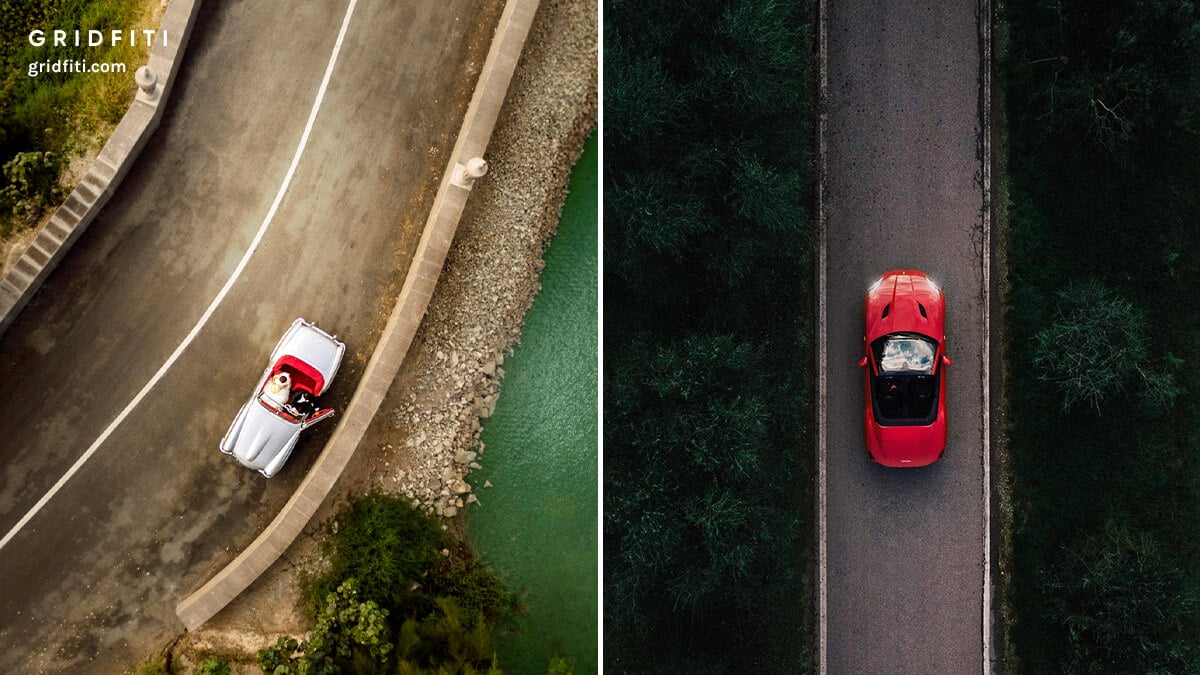 Images by Jon Rtz and Gridfiti
Images by Jon Rtz and Gridfiti
Do you already have a go-to lens you use for car photography? What kind of focal length suits your style most? Let us know in the comments! Make sure to follow us on Gridfiti Auto on Instagram and Pinterest for more automotive content.
Gridfiti is supported by its audience – when you buy something using the retail links in our posts, we may earn a small commission at no additional cost to you. We only recommend products we would use ourselves and recommend to our friends and family. Read more about our affiliate disclaimer.